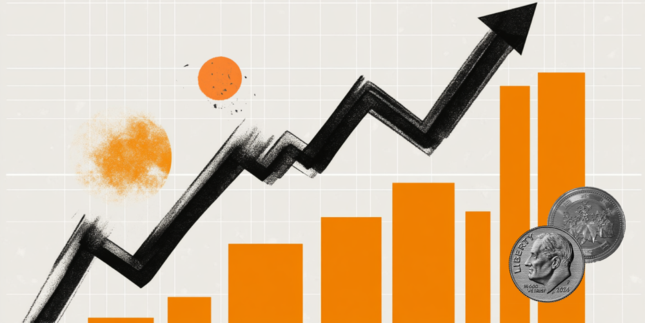EUR/USD weakens below 1.0400 as traders await US NFP release
- EUR/USD softens to around 1.0375 in Friday’s Asian session.
- Trump’s tariff threats weigh on the shared currency.
- US January employment data will be the highlights later on Friday.
The EUR/USD pair trades on a softer note around 1.0375 during the Asian session on Friday. The uncertainty surrounding US trade policy and the risk-off sentiment weigh on the Euro (EUR). Traders will keep an eye on the German Industrial Production ahead of US Nonfarm Payrolls (NFP) on Friday.
US President Donald Trump appeared to be using tariff threats towards the EU, calling the trade balance an “atrocity” and vowing that tariffs “will definitely happen.” EU leaders have promised to retaliate if Trump goes ahead with tariffs. The European Central Bank (ECB) policymaker Piero Cipollone said the central bank is set to cut interest rates further as inflation eases and warns that the trade war tensions could have a negative impact on the 20-nation eurozone. The escalating trade tensions might drag the shared currency lower against the US Dollar (USD).
Across the pond, the hawkish comments from US Federal Reserve (Fed) officials provide some support to the Greenback. Chicago Fed President Austan Goolsbee stated on Thursday that the uncertainty makes the environment for the Fed foggier, a reason to slow the pace of cuts. Meanwhile, Dallas Fed President Lorie Logan said that while inflation progress has been significant, the US labor market remains far too firm to push the Fed into rate cuts any time soon.
Economists expect the US economy to have added around 170,000 jobs in January, compared to the 256,000 gain in December. The unemployment rate is estimated to hold steady at 4.1%, suggesting continued resilience in the labour market despite recent economic headwinds. The Average Hourly Earnings are expected to ease to 3.8% YoY in January from 3.9% prior. If the reports show a weaker-than-expected outcome, this could exert some selling pressure on the USD and create a tailwind for the major pair.
Euro FAQs
The Euro is the currency for the 19 European Union countries that belong to the Eurozone. It is the second most heavily traded currency in the world behind the US Dollar. In 2022, it accounted for 31% of all foreign exchange transactions, with an average daily turnover of over $2.2 trillion a day. EUR/USD is the most heavily traded currency pair in the world, accounting for an estimated 30% off all transactions, followed by EUR/JPY (4%), EUR/GBP (3%) and EUR/AUD (2%).
The European Central Bank (ECB) in Frankfurt, Germany, is the reserve bank for the Eurozone. The ECB sets interest rates and manages monetary policy. The ECB’s primary mandate is to maintain price stability, which means either controlling inflation or stimulating growth. Its primary tool is the raising or lowering of interest rates. Relatively high interest rates – or the expectation of higher rates – will usually benefit the Euro and vice versa. The ECB Governing Council makes monetary policy decisions at meetings held eight times a year. Decisions are made by heads of the Eurozone national banks and six permanent members, including the President of the ECB, Christine Lagarde.
Eurozone inflation data, measured by the Harmonized Index of Consumer Prices (HICP), is an important econometric for the Euro. If inflation rises more than expected, especially if above the ECB’s 2% target, it obliges the ECB to raise interest rates to bring it back under control. Relatively high interest rates compared to its counterparts will usually benefit the Euro, as it makes the region more attractive as a place for global investors to park their money.
Data releases gauge the health of the economy and can impact on the Euro. Indicators such as GDP, Manufacturing and Services PMIs, employment, and consumer sentiment surveys can all influence the direction of the single currency. A strong economy is good for the Euro. Not only does it attract more foreign investment but it may encourage the ECB to put up interest rates, which will directly strengthen the Euro. Otherwise, if economic data is weak, the Euro is likely to fall. Economic data for the four largest economies in the euro area (Germany, France, Italy and Spain) are especially significant, as they account for 75% of the Eurozone’s economy.
Another significant data release for the Euro is the Trade Balance. This indicator measures the difference between what a country earns from its exports and what it spends on imports over a given period. If a country produces highly sought after exports then its currency will gain in value purely from the extra demand created from foreign buyers seeking to purchase these goods. Therefore, a positive net Trade Balance strengthens a currency and vice versa for a negative balance.
Forex News
Keep up with the financial markets, know what's happening and what is affecting the markets with our latest market updates. Analyze market movers, trends and build your trading strategies accordingly.
















